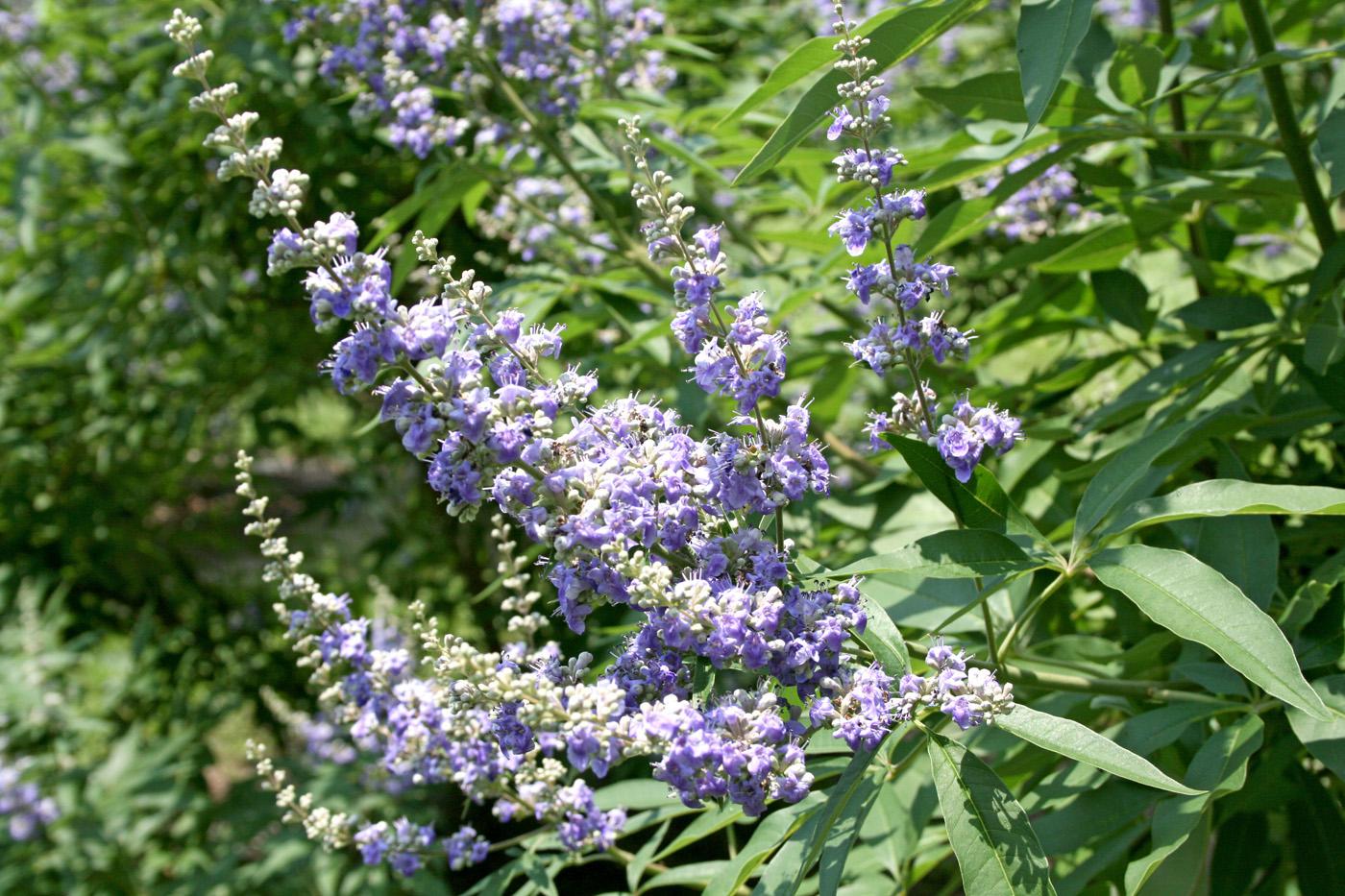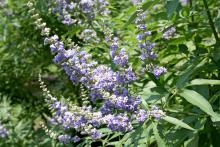Information Possibly Outdated
The information presented on this page was originally released on June 3, 2010. It may not be outdated, but please search our site for more current information. If you plan to quote or reference this information in a publication, please check with the Extension specialist or author before proceeding.
Chastetree brings beautiful blooms, color to landscapes
The Chastetree has begun flowering, and its brilliant blooms are causing many to stop and take notice.
The native range of Chastetree is the low woodlands of southern Europe and western Asia. It was first introduced to the United States by settlers in the 1500s. Known botanically as Vitex agnus-castus, the name dates back to ancient Greece, when Athenian woman lined their beds with the leaves during the feast of Ceres. It also known as chasteberry and monks pepper.
The flowering period begins in late May on the Gulf Coast and soon afterwards in north Mississippi. The main flowering period lasts up to six weeks and continues sporadically for the rest of the summer.
The tiny flowers bloom in small clusters that come together to form larger arrangements. These arrangements, or panicles, can be up to 18 inches long and appear at the tips of branches and in the axils of the leaves.
The flower color varies from lavender to lilac to pale violet. The color can even be a brilliant, nearly fluorescent, blue. During the initial flush, the show of flowers may resemble a hazy blue cloud. They have a delicate, slightly floral scent.
The leaves are arranged opposite from the blooms on the distinctly square stems. They grow in clusters, with five to nine finger-like leaflets radiating from a single point. When crushed, the stems and foliage smell sweet. The foliage is dark gray-green on top and bluish gray underneath. Mature leaves have slightly fuzzy bottoms.
The Chastetree tolerates hot and dry weather extremely well and makes an outstanding small tree for the landscape. It is typically sold as a multi-stem tree and will eventually grow up to 15 to 20 feet tall and wide. The tree tolerates pruning well and is easily maintained in the 8- to 10-foot range. In fact, pruning encourages the development of a strong branching structure. All pruning should be completed by late winter as the flowers are produced on the new year’s growth.
Plant the Chastetree in partial shade to full sun for best flowering performance. While tolerant of a wide variety of soil conditions and textures, Chastetree prefers a well drained soil. This plant will suffer in highly organic soils that stay wet.
Chastetree is a spectacular specimen plant in the landscape. It is particularly well suited to be grown in a large container near a patio or other outdoor living area, but be aware that it can bring in scads of bees and other pollinators. It can also attract the hummingbird to gardens and landscapes. So plant one today, and sit back and enjoy the view.








